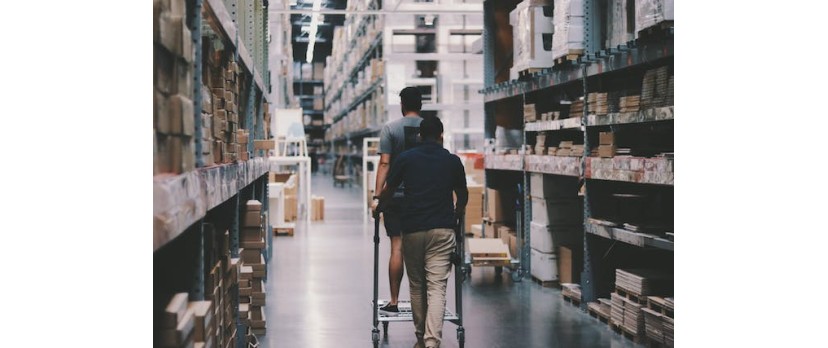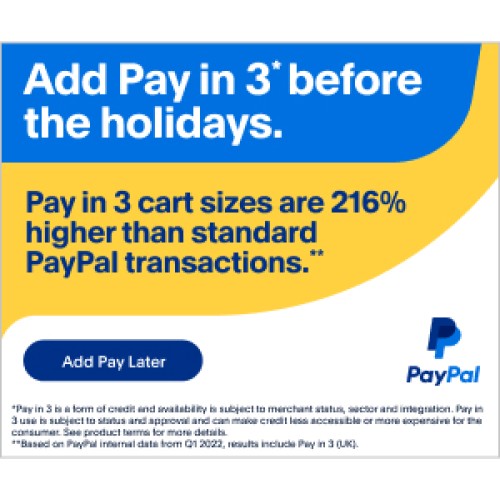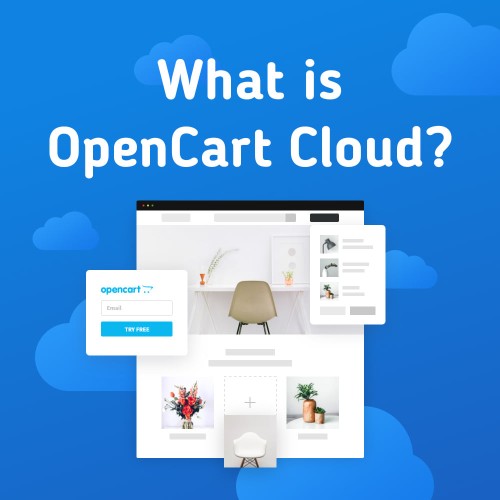Safety stock planning is essential to keep products available and orders fulfilled. This stuff is retail 101, but it doesn’t mean it’s a cheap or easy task.
Recent events have exposed cracks in the global supply chain—from the pandemic to geopolitical conflict and climate troubles—meaning it’s harder for retailers to keep stock flowing to their warehouses. These problems also come at a time when consumer demands for rapid delivery have never been higher.
Businesses are faced with a tough dilemma: how do you balance customer demands with the costs of safety stock planning? And is this extra effort even worth it?
We’re here to help you answer that question. On this page, we’ll explain why effective safety stock management is key for customer satisfaction and how you can improve your strategy.
Image sourced from Statista
What is Safety Stock?
Safety stock is a term often used in retail inventory planning. It refers to your inventory backlog (or ‘buffer’) that ensures you never totally sell out of a particular product.
Whether you run a brick-and-mortar store in Canada or an ecommerce store with a domain name Australia, running out of inventory is a worst-case scenario for your business. It means you can’t sell your products, you still have to pay overheads, and your customers will start looking elsewhere.
So, why don’t businesses just order loads of stock to avoid this problem?
The answer is because it’s expensive. Items held in your warehouse take up space, carry insurance costs, and depreciate in value over time. It means you have to spend a lot of money up-front that could have been invested into more useful areas, like product R&D or marketing. And, if customer demands change, you’ll be left with redundant products that are hard to shift.
This is why small businesses have a hard time with inventory management. They need to predict how much stock they’ll need each month and order the perfect amount to keep things ticking smoothly—a technique known as Just-In-Time (JIT) inventory management.
Image sourced from amsc-usa.com
Safety stock, as the name implies, is like having a second chance when things go wrong with this model. It means you’ll have a buffer of stock to keep things moving in case of issues with your supply chain. Often, the challenge is knowing how big of a buffer you’ll need.
How Does Safety Stock Management Impact Customer Satisfaction?
Safety stock inventory management works behind the scenes to deliver a great experience for customers. Let’s explore some of the different aspects for businesses to consider:
Safety stock means faster order fulfillment
Having safety stock means businesses can reliably send orders out to customers on time. You’ll never have to send the dreaded “Your order is delayed” email, and things will keep ticking smoothly as you meet your customers’ expectations.
It also means you can hold true to delivery options like next-day, same-day, or scheduled delivery. These services make your brand stand out compared to competitors and are a great way to attract repeat business to your site. Just be warned that it does set the bar high!
Safety stock means you’re resilient to market conditions
With safety stock in place, it means you can keep sending products out to customers regardless of surges in demand or delays in supply.
There are known market fluctuations, like pumpkins selling more in the run-up to Halloween, but some market events just can’t be predicted. For instance, did anyone expect the world’s largest trade artery to be blocked by a container ship for six days in 2021? And even if you’re shipping from local suppliers, you’re still vulnerable to price hikes or unforeseen delays. Having a buffer of safety stock removes that risk and gives you time to create alternative plans.
Safety stock ensures consistent product quality
Many businesses buy raw materials to turn into finished goods. When this is the case, having a batch of safety stock makes it easier to maintain consistent product quality and a steady flow of production.
For instance, let’s say that you make T-shirts for a living and only buy heavyweight cotton. If that cotton ever faces supply chain disruption, then you can keep producing and selling your products without having to revert to a different material. This is a crucial aspect of brand building because if your products constantly change, then it lowers expectations of their quality.
Free-to-use image sourced from Unsplash
Safety stock means you can accommodate all of your customers’ needs
Safety stock enables businesses to meet the diverse needs of anyone in your customer base, whether they’re making one-off orders or want a longer-term partnership.
Holding onto high-value prospects and converting them into loyal clients is essential for the long-term success of any retail business. Safety stock is a great way to prove to them that you’ll always have their back.
What Happens When Safety Stock Runs Out?
If your safety stock levels can’t keep up with customer demand, you’ll end up with a “stockout.”
You’ll either have to gray that product out on your website or increase the expected delivery time by a number of days or weeks. Besides resulting in lost sales for your business, poor safety stock management harms the customer experience in a number of ways:
Stockouts damage customer confidence
Out-of-stock products are a bad look. Whether you’re dealing with a new sales lead or a loyal customer, the effect is the same. They’ll think that your service is unreliable and that they’d be better off shopping elsewhere. Over time, this has a compounding effect on brand image.
You’ll also have frustrated staff who have to relay the bad news to customers. Frustrated staff will often become disengaged. You’ll need to factor this into your workforce engagement management strategy. Frustrated and disengaged staff leads to lower customer satisfaction and vice versa. This can start a cycle of lower customer staff and employee morale.
Stockouts can breach service-level agreements
When working with large clients, businesses often have service-level agreements (SLAs) in place. If the reality of your service doesn’t match the agreed-upon delivery times or product quality, then they’ll have grounds to terminate that contract. In some cases, your SLA might even force you to pay reimbursement for damages suffered by the client.
Stockouts mean you’ll struggle to give accurate delivery estimates
When your safety stock runs out, any delivery estimates you have for your customers go out of the window. Since you’re waiting on your supplier’s shipment, it means you can’t say with certainty when the products will be available again.
If this happens, your customers are likely to not just cancel their order but they’ll look for a more reliable retailer elsewhere. On a large scale, this could completely wipe out your loyal customer base.
Image sourced from FT.com
Stockouts means you’ll face more customer service inquiries
Miscalculating the amount of safety stock you have is a nightmare scenario because it means breaking delivery promises that you made to your customers. As a knock-on effect, your customer service team is likely to face higher call volumes and have some tough explaining to do.
To minimize call handling times during busy periods, you can make the most of call center technology trends like AI self-service options or automated SMS alerts. These keep your customers in the loop even when your service falls below desirable levels, which proves that you care about your customers.
How Can Supply Chain Leaders Create a Solid Safety Stock Strategy?
According to MHI and Deloitte, 74% of logistics leaders are investing in their supply chain technology. Let’s explore some of the major trends in this space:
Keep track of inventory levels: You can’t maintain safety stock if you don’t know when to order more. This means you need to constantly perform stock counts or, better, leverage inventory-tracking technology.
For instance, you can download remote desktop technology to connect with your warehouse’s machines (computers, barcode scanners, RFID tags, etc.) and monitor this data in real time. Your logistics team can then access this data and order more stock wherever they are.
Create sales forecast models: Analytical forecasting software is becoming more sophisticated each year, but the premise remains the same. It uses historical sales data and customer demand patterns to predict how much safety stock is needed to never run out.
Factor in supply chain risks: Machine-learning programs are also getting better at recognizing risks in the supply chain. It’s no secret that the cost of shipping has exploded in recent years, and AI is key to recognizing when a supplier’s products may suddenly run dry.
Collaborate with suppliers: Alternatively, instead of relying on technology to predict supply chain disruption, you can focus on building good relationships with your suppliers. A virtual call center may be useful for dealing with both suppliers and customers and maintaining a good reputation.
Account for seasonal trends: Stock managers should pay particularly close attention to seasonal trends. Events like Black Friday and the build-up to Christmas often see higher sales volumes, which means a larger buffer of safety stock should be accumulated far in advance.
Image sourced from Deloitte
Toward Better Safety Stock Management
To wrap up, safety stock management is a crucial piece in the retail puzzle.
A well-founded strategy is what empowers businesses to meet their service level targets and deliver a great experience for customers. But, if this fails, your product lines could suffer from stockout, damaging both your brand image and your bottom line.
We live in an era where instant gratification—next-day and scheduled delivery options—has become the norm. And, if you can’t keep track of your inventory levels or predicted sales, it’s almost impossible to offer these sorts of services.
Businesses simply can’t afford to let their customers down. Get started with efficient safety stock management, and it’ll pay dividends in the form of brand loyalty and higher customer engagement.



Login and write down your comment.
Login my OpenCart Account